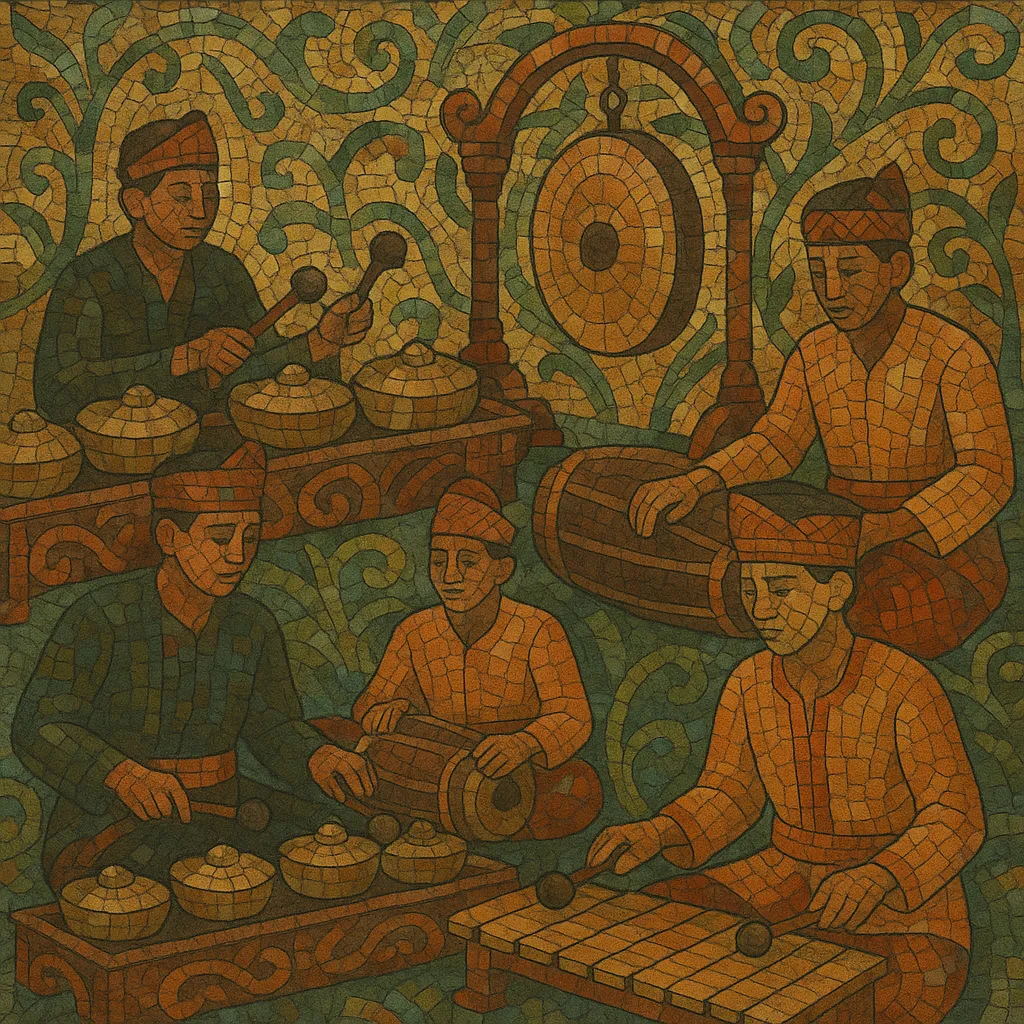Malay gamelan (Gamelan Melayu) is a court-derived ensemble tradition from the Malay Peninsula, centered historically in the royal courts of Terengganu and Pahang in present-day Malaysia.
It features a family of bronze and wooden percussion instruments—metallophones, bossed gongs, bonang/keromong, gambang (xylophone), kenong, kempul, and a large gong agung—supported by double-headed drums (gendang) that cue form and tempo. Pieces are built on cyclical colotomic structures in which different gongs articulate nested time markers, while metallophones render a core melody (balungan) that other instruments elaborate heterophonically.
Associated closely with the aristocratic joget gamelan dance repertoire, Malay gamelan employs heptatonic pelog-type tunings unique to each ensemble. Its music tends toward graceful, measured tempi and elegant, symmetrical phrases that mirror court dance choreography and ceremonial atmosphere.
Gamelan sound-worlds originating in Java spread throughout the Malay world via courtly exchange and migration. By the 19th century, a Javanese-style gamelan had been adopted within the Riau–Lingga and Johor-Riau courts and, through dynastic and cultural ties, entered the Malay Peninsula’s royal circles. From there, a distinct courtly practice coalesced in Terengganu and later in Pahang, where it accompanied elite dance and ceremonial occasions.
Within the Terengganu and Pahang courts, ensembles were standardized around a set of bronze gongs, metallophones, and drums tuned to a pelog-type heptatonic system. Repertoire tied to joget gamelan—such as Timang Burung, Ayak-Ayak, Perang, and Seri Istana—became emblematic. The music’s dignified pacing, clear colotomic cycles, and elegant melodic contours reflected court etiquette and choreographic needs.
As colonial-era social changes and post-war transitions reshaped patronage, court gamelan practice diminished. Mid-to-late 20th century cultural policy, academic research, and arts education in Malaysia fostered revival efforts. University ensembles, cultural institutions, and dedicated groups documented instruments and tunings, reconstructed choreography, and taught the repertoire.
Today, Malay gamelan thrives in Malaysia through royal ensembles, national cultural bodies, universities, and independent groups. Contemporary composers and performers experiment with new works while preserving canonical dances and cycles. The style also appears on international stages and recordings, contributing a distinctly Malay voice to the broader global appreciation of gamelan traditions.


